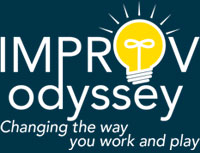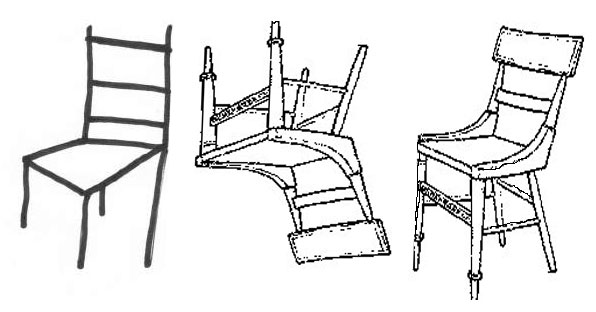See Unlabeled
“That’s what poetry is for. Using language to penetrate the mystery.” – Joseph Campbell, the Power of Myth
Intuition is not just a word
When you hear a word too often it can lose its meaning.
Often Viola would exchange the word intuition for other phrases that she felt kept you cognizant about the meaning of Intuition. She would use words like treasure house, or X-Area, the Unknown in place of Intuition. It is often over-used as a word and its meaning can be easily overlooked by labeling it.
When you hear the same word too often it can lose its potency.
When we label something we can partially dismiss it because it goes into our head to be stored and referred to in memory. When Intuition becomes a label you don’t have to consider it as the important multi-dimensional concept that it is and its impact on our psyche.
Try to see unlabeled
When we see unlabeled, we have a direct experience with what we are seeing. This is illustrated very nicely in the book Drawing on the Right Side of Your Brain.
The exercise that brought this home was drawing a chair. Your first attempt is to get a chair to draw and sit there and draw it as best you can. Your first attempt will be chair-like, but dimension, scale and verisimilitude are missing. It’s going to be a wonky drawing. Why? You first look at the chair and then look down at your pad and draw what you remember. You look back up and draw some more. You see something and label it ‘chair leg’ and then draw from memory what you saw in your mind’s eye. You will get a representation of a chair by the end, but it will not look exactly like the chair sitting in front of you. We (non-artistic types) store the idea of “chair” in our head and draw what we picture in our mind rather than what’s actually there. We’ve labeled “Chair” and have an idea of a chair. We invariably draw that. What we are drawing is the ‘label of chair’ from memory, interpretation and opinions we hold about “Chair” rather than drawing exactly what we see. It has to be distorted because it comes from the head. It is literally colored by our impression of chair and we (I) listen to our judgment about how good am I drawing, our trying to do the best we can, listening to mind-talk like “OK, it’s sort of what I see, but I’m going to finish it anyway and see what I get. “I’m really not an artist” “This is the best I can do” etc. that and other self-talk is happening while you draw. You finish and there it is… a sort-of picture of the chair.
Then the book tells you to turn the chair upside down and draw it again. Now you look and you have to see what is there. First you see a thing sticking up, next to a smaller thing sticking up just behind it. It is resting on a platform that has a certain shape. From the bottom of that platform are spoke-like spindles connected by another solid form, etc. You draw what you see, piece by piece and at the end you are instructed to turn your paper upside down and what do you get? An exact rendering of the chair! It’s amazing!
By turning the chair upside down, you can no longer reference the image of chair. You are stuck with drawing lines that have no particular association in your mind. You are simply seeing UNLABELLED and now have a new experience and that chair comes into focus on your page.
How quickly we label
We too often look, but do not see. We look at something and immediately make note of it in our mind, and label it quickly so we can think about other things. In a Spacewalk exercise, Viola ran one time, she asked us to send your sight out as an extension of yourself and see what you see. “Try to see unlabeled”, she’d say. “It is not so easy, but try.”
I look in the room and see a light switch on the wall. In an instant, my mind says light switch and I have seen them before: All kinds. This one’s bone white, dirty, etc. ‘hmm?’ I think. It’s been used a lot… Uh, Oh! I’ve begun labeling it. Seeing it sparked my memory of hardware store bins of light switches, and now I’ve also started thinking how old and used this one is. And what happened? I’ve stopped seeing it! I’ve only been looking at it for a matter of seconds and I’ve begun to label it, associate other things with it and I’m now in my head. I’ve stopped seeing it.
So the first step is to notice when you label something or in some other way categorize it.
Now she’d coach, “Notice when you label and go to another object!” I do so again and see a ceiling tile. One of those acoustic ones with the little holes.
“I haven’t seen one like that for years. I say to myself. This must be a very old building. I remember being in kindergarten and the ceiling looked like this… ” Did it again!
I go to another object and another and I realize how quickly I want to label something so I can stop seeing it; stop being in relation to it; stop noticing it for itself and not for what it sparks in me. I’ll tell you, it takes a while, but by noticing this, soon you can see something for more than a few seconds and it gets better the more you practice seeing unlabeled.
If we label something we can stop dealing with it and deal with our idea of it. That’s in our head, where we store information about things and where we hold opinions of those things and that memories attached to those things. That is not a direct experience. It is encountering something and relating to it through our personal lens. A lens that distorts reality.
How often do we do this with people? We don’t see them for who they are, but for how we label what they are in relation to us. That will color and limit the possible relationships you can have with them. When we see our idea of what we see, it is a partial illusion. When we see without labels, we truly see. We develop an artist’s eye.
Without labels a direct experience is possible
“See what you see and let what you see, see YOU!” is a sidecoach that helps you understand this concept. When you consider that what you are seeing is seeing you, you have a moment of “true relation” with it. You are there in the space and it is there in the space and each has a right to be in the space. Then the labeling starts and you have to keep reminding yourself to let what you see – see you.
“See your fellow player in the space and let them see you.” – now we can experience each other directly and everything becomes possible. Love and connection flourish in this state.
So try it! SEE UNLABELLED!



Thank you for sharing this task. I will try it right away even though I know it works since I had to do it in art classes, long time ago, but know I will use it as an illustration to convince my students how they, or we, are limited through our way of labelling everything.